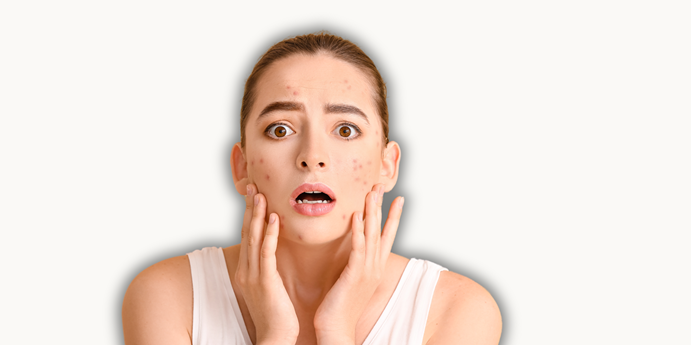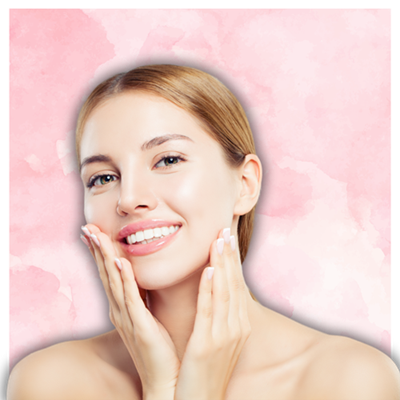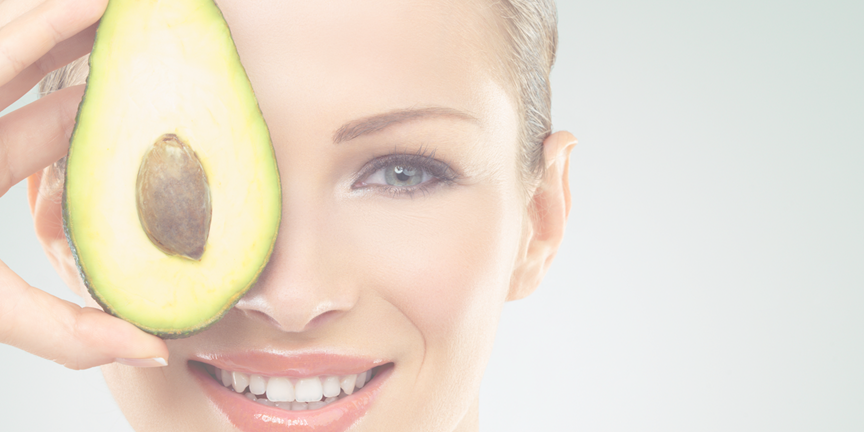
Solving Acne: The Top Different Ingredients That Combat Acne, Backed by Experts
Understanding Acne and Treatment Options
Acne is a widespread skin condition characterized by inflammation, redness, and the potential for scarring, impacting millions globally. This condition can manifest as pimples, blackheads, and cysts, primarily affecting areas with high oil production such as the face, back, and shoulders. The causes of acne are multifaceted, including hormonal changes, excess sebum production, and bacterial growth, making it a complex issue that often requires a multifaceted approach to treatment.

Treatment options for acne vary widely, ranging from over-the-counter (OTC) products to prescription medications and natural remedies. OTC treatments typically include topical solutions containing ingredients like salicylic acid or benzoyl peroxide, which help to reduce inflammation and clear pores. Prescription options, such as oral antibiotics or retinoids, may be necessary for more severe cases. Natural remedies, including certain essential oils and dietary changes, are also popular among those seeking alternative solutions.
To find the most effective acne treatment, it’s crucial to understand both the causes of the condition and the available options. Factors such as skin type, acne severity, and personal preferences play a significant role in determining the best treatment plan. Consulting with a dermatologist can provide personalized recommendations and ensure that the chosen approach aligns with an individual’s specific needs, ultimately leading to clearer, healthier skin.
Ingredients for Treating Acne
Benzoyl Peroxide
Benzoyl peroxide is a popular and effective ingredient in acne treatment due to its ability to kill acne-causing bacteria and reduce inflammation. By targeting Propionibacterium acnes, the bacteria responsible for many acne outbreaks, benzoyl peroxide helps to minimize the occurrence of pimples and breakouts. Additionally, it works to decrease redness and swelling, making it a valuable component in a comprehensive acne treatment regimen.
Available in various concentrations, benzoyl peroxide can be found in products ranging from cleansers to gels and spot treatments. Concentrations typically range from 2.5% to 10%, allowing users to choose a strength that suits their specific skin needs. Starting with a lower concentration and gradually increasing it as tolerated can help minimize potential irritation while still providing effective treatment.

While benzoyl peroxide is highly effective, it can also cause side effects such as skin irritation, dryness, and discoloration. To mitigate these effects, it’s important to start with a lower concentration and monitor your skin’s response before increasing the strength. Additionally, incorporating a moisturizing routine and using sun protection can help manage potential side effects and maintain overall skin health while using benzoyl peroxide.
Salicylic Acid
Salicylic acid, a beta hydroxy acid (BHA), is a highly effective ingredient for targeting acne. It works by penetrating deep into the pores to unclog them, thereby reducing the formation of blackheads and whiteheads. Additionally, salicylic acid helps to reduce inflammation and prevent new breakouts, making it a valuable component in managing acne-prone skin and maintaining a clearer complexion.
Typically available in concentrations ranging from 0.5% to 2%, salicylic acid can be found in various skincare products such as cleansers, toners, and spot treatments. This range of concentrations allows users to choose a product that matches their skin's sensitivity and acne severity. Incorporating salicylic acid into your skincare routine can effectively address different forms of acne, from mild to moderate, while promoting smoother skin.

Glycolic Acid
Glycolic acid, an alpha hydroxy acid (AHA), is a powerful exfoliant that helps to remove dead skin cells from the surface of the skin. This exfoliation process unclogs pores and improves skin texture, making it an effective treatment for acne-prone skin. By reducing the buildup of dead cells, glycolic acid helps to prevent the formation of new breakouts and promotes a smoother, clearer complexion.
In addition to its exfoliating properties, glycolic acid also aids in reducing inflammation, which can help to alleviate redness and swelling associated with acne. This dual action of exfoliation and anti-inflammatory benefits makes glycolic acid a valuable component of any acne treatment regimen. It can be found in various skincare products such as cleansers, serums, and masks.
For those new to glycolic acid, it’s important to start with a lower concentration and gradually increase as tolerated. This approach helps to minimize potential irritation while allowing your skin to adjust to the acid. Regular use of glycolic acid can enhance skin clarity and texture, leading to a more even and radiant complexion while managing acne effectively.

Lactic Acid
Lactic acid is another alpha hydroxy acid (AHA) known for its gentle exfoliating properties and ability to brighten the skin. It works by removing dead skin cells and promoting cell turnover, which helps to reduce the appearance of acne and improve overall skin radiance. Lactic acid also aids in enhancing skin hydration, making it suitable for those with dry or sensitive acne-prone skin.

In addition to its exfoliating and brightening effects, lactic acid can help to balance the skin’s moisture levels. This is particularly beneficial for individuals who experience dryness as a result of using other acne treatments. By improving hydration, lactic acid not only helps to reduce the appearance of fine lines and wrinkles but also supports a healthier and more luminous complexion.
To incorporate lactic acid into your skincare routine, look for products such as cleansers, serums, or exfoliating masks that contain this ingredient. Start with a lower concentration to gauge your skin’s response and gradually increase as needed. Regular use of lactic acid can lead to clearer, brighter skin while also maintaining adequate moisture levels.
Sulfur
Sulfur is a natural ingredient that effectively targets acne by reducing sebum production and unclogging pores. Its ability to absorb excess oil helps to prevent the formation of new breakouts and keeps the skin clear. Sulfur also has antimicrobial properties that can help to combat acne-causing bacteria, making it a valuable addition to acne treatment products.
In addition to controlling oil production, sulfur helps to exfoliate the skin and remove dead skin cells. This process further aids in preventing clogged pores and reduces the likelihood of developing new acne lesions. Sulfur can be found in various skincare products such as masks, spot treatments, and cleansers, offering versatile options for integrating it into your skincare routine.

While sulfur is effective for managing acne, it’s important to use it as part of a balanced skincare regimen. Sulfur-based treatments can sometimes cause dryness, so it’s beneficial to follow up with a moisturizer to maintain skin hydration. Regular use of sulfur-containing products can help to control acne and promote clearer, healthier skin.
Tips for Using Acne Treatments
When using any skincare product, it’s crucial to always read the label and follow the instructions provided. Each product comes with specific guidelines for application, frequency, and usage that are designed to ensure safety and effectiveness. Adhering to these instructions helps prevent adverse reactions and ensures that you achieve the best results from the product. Whether it's a new treatment or a familiar staple in your routine, understanding and following the label instructions is essential for optimal skin care.

Starting with a lower concentration of active ingredients and gradually increasing as needed is a wise approach, especially when introducing a new product to your routine. This strategy allows your skin to adjust to the product and minimizes the risk of irritation or sensitivity. By slowly building up the concentration, you can gauge how your skin responds and find the right balance that works for you, ensuring a smoother transition and more effective treatment.
Patience and consistency are key when it comes to seeing results from skincare products. Skin improvements can take time, and consistent use of the product is necessary to achieve the desired outcomes. Alongside this, incorporating daily sunscreen into your routine helps protect your skin from UV damage, which can exacerbate irritation and hinder the healing process. By following these practices, you support your skin’s recovery and enhance the effectiveness of your skincare regimen.
When to Seek Professional Help
If your acne does not improve after 2-3 months of using over-the-counter (OTC) products, it may be time to consult a dermatologist. While OTC treatments can be effective for mild to moderate acne, persistent issues may require stronger interventions or a different approach. A dermatologist can assess your condition, recommend alternative treatments, and tailor a plan to address your specific needs, providing a more targeted solution for better results.

Conclusion
To treat acne effectively involves a combination of selecting the right ingredients, maintaining a consistent skincare routine, and exercising patience. Different ingredients target various aspects of acne, such as reducing inflammation, unclogging pores, and killing bacteria. A thoughtful approach to incorporating these ingredients into your daily routine can lead to significant improvements in skin clarity and overall health. However, achieving clear skin takes time, and consistency is key to seeing long-term results.
Understanding the range of acne-fighting ingredients and how to use them is crucial for finding the most effective solution for your skin. From salicylic acid and benzoyl peroxide to natural remedies like tea tree oil, each ingredient offers unique benefits for treating acne. By familiarizing yourself with these options and their proper usage, you can tailor a treatment plan that addresses your specific skin concerns and maximizes the benefits of each product.
Always read the label and follow the instructions provided with your skincare products to ensure safe and effective use. Adhering to these guidelines helps prevent misuse and minimizes the risk of irritation or adverse reactions. If you find that your acne persists despite consistent use of OTC products, or if you experience severe side effects, don’t hesitate to seek professional help. A dermatologist can offer personalized advice and advanced treatments to better address your acne concerns and improve your skin health.



